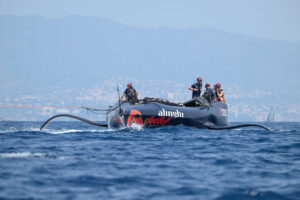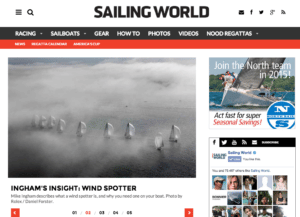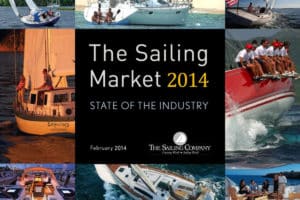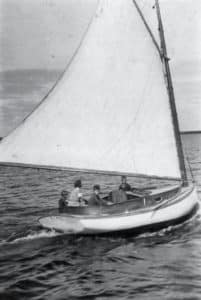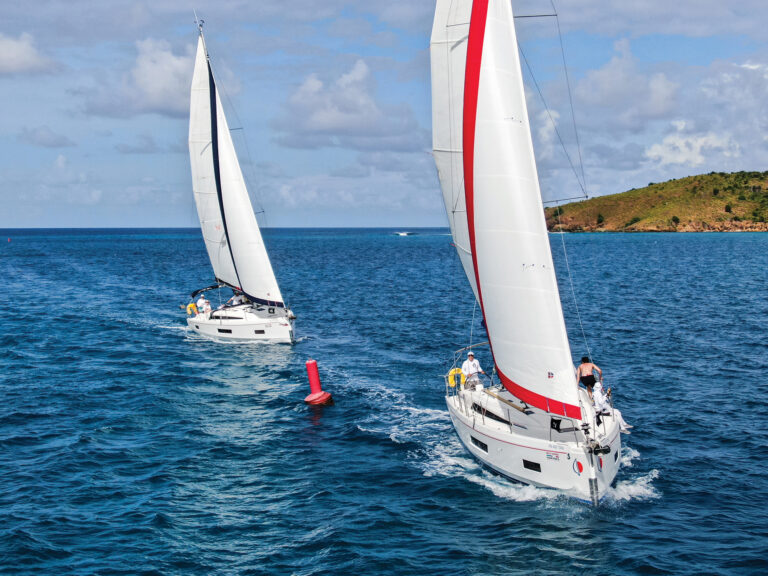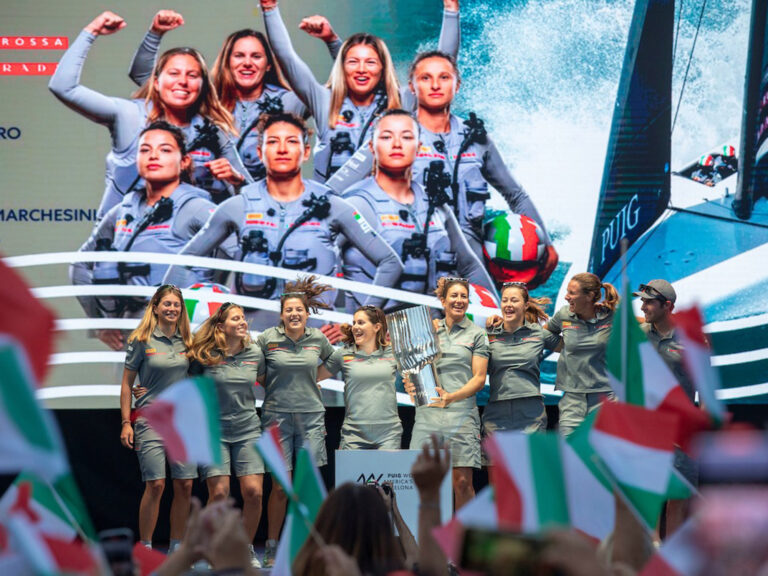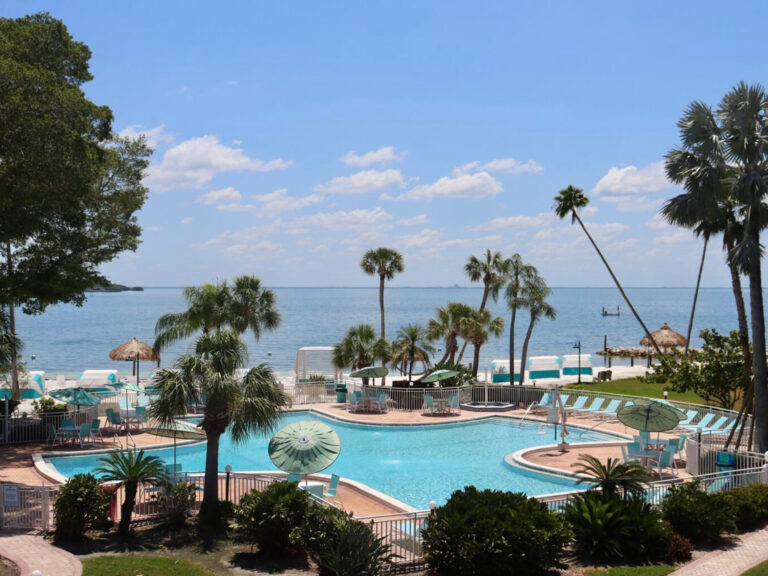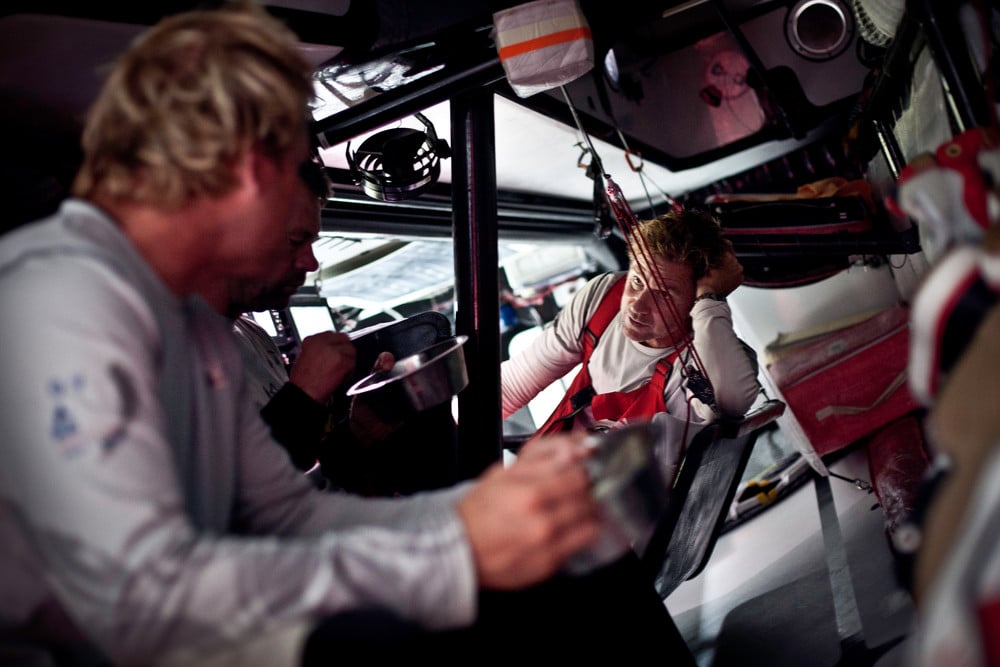
PUMA’s Pounce
Ryan O’Grady, a veteran follower of the Volvo Ocean Race and a top amateur sailor, is providing regular insight and analysis on the 2011-’12 Volvo Ocean Race for SailingWorld.com. To get the full picture of this dynamic race, follow the racing in our Finish Line forum, track the fleet, and catch up on the race with O’Grady’s previous Volvo Voyeur blogs.
PUMA Ocean Racing Day 5 Report: “It only gets stranger. We’re surrounded by Japanese islands, one of which we passed within a mile of last night, and being by ourselves is again a surprise. Nobody’s necessarily excited about it, and it was never part of our game plan to begin with, but we’re clearly sailing in a different weather system than the rest of the guys, and it just sort of ‘happened.“
Leg 4 is supposed to be from Sanya to Auckland. Anyone with access to a map knows Japan isn’t exactly between China and New Zealand. So Puma’s hard left turn to the north after passing Taiwan caused a bit of an uproar in ocean racing circles. After fighting so hard for 5 days to get back in touch with the fleet, and moving from last to a competitive fourth, the black cat tacked away, leaving the company of the other boats to take a tour of the Japanese islands. Within a day, they were nearly 300 miles behind leg-leader CAMPER. The Internet forums exploded: “They sail fundamentally smart then take these flyers that put them in catch-up mode. Time to stop banging the corners. Maybe they should consider a navigator switch in Auckland?” And “Ken Read is a smart racer. I’m not sure why he continues to make these bonehead moves,” reflected the more polite analysis from a PUMA fan base that had had enough. The Pounce has singlehandedly become the most compelling story of the race so far, and the ramifications are just now beginning to become clear.
Let’s go back to the origins of the Pounce. Media crewmember Amory Ross explains, “Our reasoning to go north was grounded: you have to go there to get east, and you have to go east to get south, and south is where we want to finish.” In a normal beercan race, we all should know that in light air the fastest route to the next mark is to sail low and fast towards a persistent shift with more pressure. PUMA’s Pounce is just a 4,000-mile example of a time-tested tactic. Rather than sail upwind angles into breeze below 10 knots, Tom Addis chose to sail towards winds that were predicted to back and increase. If the hunch was right, PUMA would be able to set a spinnaker faster and sail east in more breeze than anyone else. If they were wrong, not only would a leg win be gone, but so too would be their realistic chance at an overall podium finish. To their surprise, no one else followed them. Perhaps it was their persistent bad luck that scared everyone else off. More likely, it was the fear of leaving the pack and pounding upwind again. Just look at what conditions were like onboard here.
“Phew!” Telefonica navigator Andrew Cape said shortly after the Pounce. “They were next to us yesterday when we were in the light winds. They chose to go north to get the breeze and it’s… interesting. I mean, once they get the breeze they are looking for they will be on course and going quite well, but they have some catching up to do.”
In order for the Pounce to work, the breeze needed to come fast. By the second day, the mood onboard PUMA was somber. Amory’s Day 6 blog reflected this: “Digging into the north was always the play for us, and though it felt like we would never be far enough, we’re here now, there’s good breeze to our east, and the time has come to cash in our “ups” to start taking back some of our [many] lost miles. But the transition from north to east comes with an uncomfortable level of anxiety. We’ve already suffered the familiar weight of going it alone, and while we never once wrote ourselves off and are very much poised to pounce on the guys to our south, the threat of losing big still looms large.”
Abu Dhabi skipper Ian Walker even started to wonder if the afterguard on Puma knew where they were going. “I suspect there is a lot of time for the race order to be shaken up yet, and now that Kenny has re-read the sailing instructions and realised we are not in fact going to Qingdao [destination port for the 2009 race], I wouldn’t bet against PUMA getting back into the fray.”
By Day 7, though, things began to look up. PUMA had turned east and was flying at twice the speed of everyone else. The crew was beginning to see the light at the end of the lonely tunnel, too. “Full main, big jib, staysail. We appear to be OK. Our lonesome detour to the north hasn’t ended in self-destruction, we don’t find ourselves hundreds of miles behind, and by all means we are back in this race. A lot sooner than expected, too, I might add,” wrote Amory in his daily blog. “Regardless of what the next few days of sailing brings, the important thing is that PUMA has some swagger back. The guys are smiling, spirits are high, and we’ve mostly forgotten the last week of torture in favor of more recent reaching pleasantries. I say mostly because everyone owns some lingering bumps and bruises we tend to revisit now and again.” By now, the rest of the fleet had a choice: go north and consolidate with PUMA or split and take the southerly road, and hope to sail fewer miles. Groupama and Abu Dhabi elected to go north, while CAMPER and Telefonica took the southerly route.
At present, all of the boats are still sailing mostly east, though Telefonica and CAMPER are edging south when they can. The timing of the turn south is critical. Within the next 24 hours, the pressure looks best for the teams most south and west. CAMPER and Telefonica look to capitalize on this and break away by sailing fewer miles. The danger of not going far enough east now is that the southerly trades blow almost due east, so cutting the corner early means slower upwind sailing at the end. Further down the track, the east also appears to hold more pressure as the fleet approaches the Doldrums.
Onboard PUMA, the gameplan has always been to be the furthest north, and the furthest east. Skipper Ken Read says, “It has been said before, and I will say it again. On this leg traditionally you have to get east in order to turn south. Will that be the case this time? We have bet on it. . . in a big way. Four days of horribly nasty sailing upwind worth of betting on it. We have had our moments since and look to get back into this thing, but there are no sure things out here. I wish there was, believe me.”
There is a lot of race left, but if the current weather models are to be trusted, I’ve got PUMA and Groupama in a dead heat leading into Auckland. The biggest chance for a shake up comes around 20 deg south, where the GFS weather model is showing light running conditions in a week. With the offshore world now watching every move of PUMA’s Pounce, there will be no shortage of second guessing their every move. For the crew onboard Puma, this leg means more than just vindication–it means free beer thanks to a friendly bet between Read and Ian Walker. “I did place a bet with him, [Walker]…last one to Auckland buys the first round of beer for the other person’s team (and in this case I believe we have 7,358 team members) when we hit the dock in Auckland. Let’s see if he mans up and accepts the bet.” Walker responded, “I’m starting to think they’re looking in a strong position right now. I think we should know in a day and a half. But if Kenny sails all the way up there and around the whole fleet then I will willingly buy him a drink.”
Finally, congratulations are in order to Telefonica crew João ‘Joca’ Signorini, who’s wife gave birth to a baby girl Monday morning. “Everything is good,” a slightly bemused Signorini said. “I have a little baby girl. I spoke to my wife Lotta two hours later, and she told me everything is good. It is hard to be here and I would much rather be with them. But here we are in the north Pacific trying to reach to Auckland — as soon as possible for me.”

